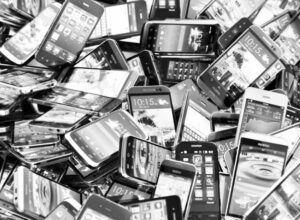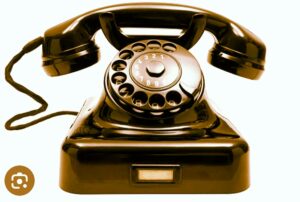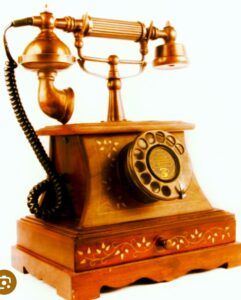How smartphones work (sending, receiving messages and calls).

When we say phone today a little rectangular object that can connect to the internet and search for information, and contain messaging apps and social networks, comes to mind.

But if you ever saw a telephone from the 1970s, you will wonder how it should be used.


Before the telephone, there was the telegraph, a device that sent signals over long cables. For telegraph, the message had to be encoded into a series of short and long beeps called Morse code, and the code then had to be decoded at the other end. People who did this encoding and decoding of the messages are called telegraph operators.
Speaking and Listening
Inside the mobile phones, you will find the following six things
- a central processing unit
- an LED display,
- a microphone,
- a speaker,
- a camera,
- and a battery to power them all.
The microphone is made of a tiny magnetic membrane called a diaphragm.
When you speak, sound waves from your mouth reach the diaphragm and cause it to vibrate.
As it vibrates, it triggers an electric current in an electrode just next to it, which passes through an analog-to-digital convector and becomes a digital signal.
These signals are then sent to the mobile network, which sends it to your friend’s phone.
Now, in your friend’s phone, the digital signal passes through a digital-to-analog convector and then a tiny electromagnet.
The magnet attracts or repels another diaphragm.
The movement of this diaphragm makes sound waves in the air, which reach your friend’s ear as an analog signal.
Most telephones are quite precise, but not perfect, so sometimes people sound different in real life and over the phone.
Sending and Receiving; How?
Your phone has an in-built antenna, which converts the digital signals into a radio wave.
“Before that, the Subscriber Identity Module (SIM) card in your phone tacks on a code that helps the network identify you and where you are”
The signal reaches the telephone tower or base station nearest to you, where it is again converted into an electric signal that can travel by cable or into a more powerful radio signal that is transmitted to a communication satellite.
It then passes through many telephone exchanges, which identify the receiver’s number and switch them onto the right path (which is why telephone numbers have a country and an area code before your actual number).
Finally, the signal reaches the cell your friend is in, and a radio signal passes to their phone, which rings.
The geographical area served by each base station is called a cell, and that is why the whole process is referred to as cellular telephony.






